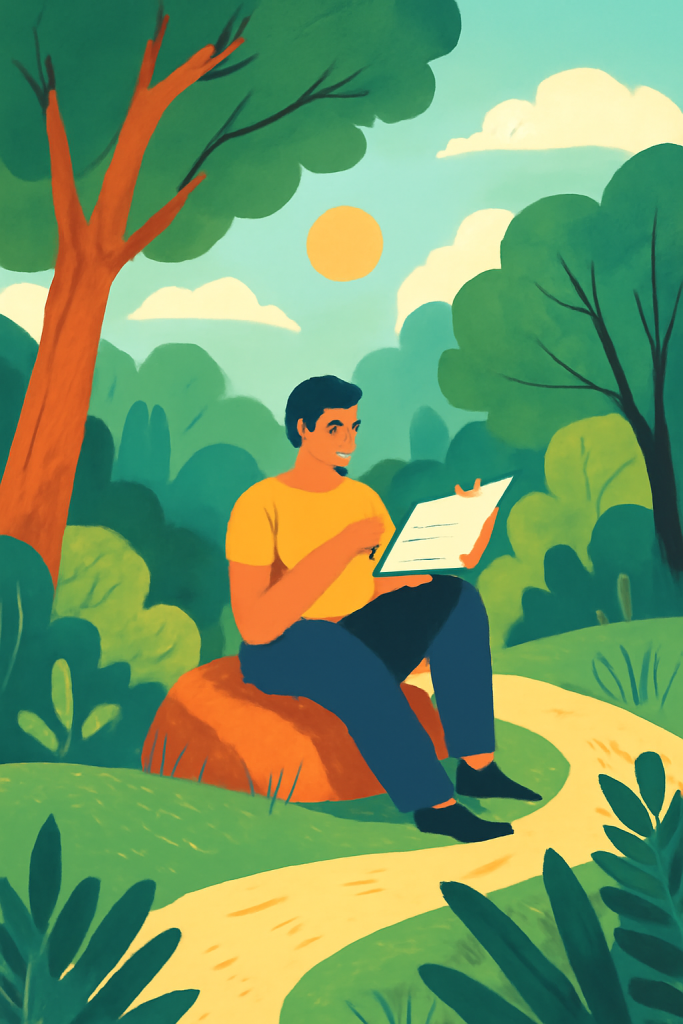Digital distractions are relentless, maintaining focus has become increasingly challenging. Emerging research highlights a compelling solution: immersing oneself in nature. This article delves into the latest findings on how natural environments can enhance cognitive function, particularly attention and focus.

Why Nature is the New Focus Tool
From Silicon Valley productivity hacks to school curriculum reforms, the idea that natural environments enhance cognitive function is gaining rapid traction. Scientists are zeroing in on how green spaces, trees, and even natural soundscapes help restore attention capacity and battle the cognitive fatigue that comes from our always-on lifestyles.
The principle behind this is rooted in Attention Restoration Theory (ART), developed by environmental psychologists Rachel and Stephen Kaplan. According to ART, urban environments overwhelm our directed attention—our brain’s ability to stay focused on demanding tasks—leading to mental fatigue. In contrast, nature stimulates involuntary attention through elements like birdsong or flowing water, allowing our brain’s focus centers to reset (Kaplan & Kaplan 1989).
New Research Validates the Power of Nature
1. Improved Cognitive Performance
A study published in Scientific Reports in 2023 demonstrated that individuals who walked in a forest for just 30 minutes performed significantly better in attention-based tests than those who walked in an urban setting. The green walkers showed improved memory recall, better task-switching, and reduced mental fatigue (Ohly et al. 2016).
2. Changes in Brain Activity
Recent neuroscientific research has started to unpack how natural environments change the brain. Resting-state fMRI scans reveal that exposure to natural scenes boosts activity in the anterior cingulate cortex and the prefrontal cortex—regions associated with executive functions like problem-solving and impulse control (Berman et al. 2008).
3. Children Benefit Immensely
Emerging studies show that children with access to green spaces perform better in school, have longer attention spans, and show fewer signs of ADHD. A recent 2025 study published on Phys.org confirmed that daily exposure to nature during school hours improved attention spans and academic performance in elementary-aged children.
Emerging Trends: Nature Prescriptions and Biophilic Design
As evidence mounts, institutions are responding.
Nature Prescriptions Are Now Mainstream
In places like Canada, the UK, and Japan, doctors are prescribing time outdoors as part of treatment plans. These “green prescriptions” may include guided forest walks, gardening programs, or simply spending 30 minutes daily in a park (Nature Prescription 2025).
A 2018 initiative in British Columbia saw over 2,000 physicians partner with the David Suzuki Foundation to write actual prescriptions for outdoor time. This isn’t just a gimmick: results showed decreased anxiety, improved mood, and sharper focus among participants (Li 2018).
Biophilic Design in Schools and Offices
Biophilic design—integrating natural elements like plants, sunlight, and water features into indoor environments—is also taking off. Workspaces designed with biophilic principles report 15% higher productivity and cognitive accuracy compared to conventional office settings (Ulrich 1984).
Some companies now provide “nature recharge rooms,” filled with greenery and calming nature sounds, as part of their employee wellness programs.
When Nature Isn’t Accessible: Virtual Forests Take the Lead
Not everyone lives near a forest or can take a stroll during work breaks. That’s where virtual reality (VR) steps in.
A 2024 study published on arXiv showed that VR simulations of nature—complete with rustling leaves and bird calls—can simulate the restorative effects of being outdoors. Participants using VR forest environments exhibited similar focus recovery and stress reduction as those who went on real nature walks (arXiv 2024).
While not a total substitute, these digital experiences can offer valuable respite, especially in urban or clinical environments where nature is scarce.
Practical Tips to Harness Nature’s Mental Benefits
You don’t need to move to a cabin in the woods to benefit from nature. Here’s how to integrate it into your daily life:
1. Commit to 120 Minutes a Week
Two hours in nature weekly has been linked with significantly better health and psychological well-being. Break it down into manageable 30-minute sessions in a local park or nature reserve.
2. Use Your Lunch Break
Instead of eating indoors or scrolling through your phone, take a walk in a nearby green space. Even 10-15 minutes of “microdosing” nature can restore your attention.
3. Green Up Your Workspace
Place a few plants on your desk or sit near a window with a view of trees. Research shows just viewing greenery can lower cortisol and improve attention span.
4. Practice Mindful Nature Observation
Whether it’s “forest bathing” (Shinrin-Yoku) or sitting quietly in your garden, intentional and mindful nature immersion activates your brain’s default mode network—linked to creativity and reflective thinking (Li 2018).
Beyond the Brain: Bonus Perks of Nature
While the spotlight is on focus, the ripple effects of nature exposure are equally powerful:
- Stress Reduction: Nature exposure reduces cortisol levels and promotes parasympathetic nervous system activity—essentially calming the mind.
- Better Sleep: Natural light exposure regulates circadian rhythms, helping people sleep more deeply.
- Enhanced Creativity: Studies show that people perform up to 50% better on creative problem-solving tasks after spending time in nature.
The Future: From Schools to Smart Cities
Governments and city planners are beginning to recognize the cognitive power of greenery.
Cities like Singapore and Barcelona are launching urban forestation projects that aim not just to beautify but to boost mental well-being. Meanwhile, schools across Scandinavia are replacing traditional classrooms with outdoor learning modules, seeing positive outcomes in attention and learning.
There’s also growing interest in integrating biometric feedback into VR nature apps—so your virtual forest changes based on your heart rate or stress level, personalizing the experience for maximum benefit.
Conclusion: The Natural Shortcut to Sharper Focus
As cognitive demands increase in our hyper-connected world, nature may be one of the most powerful, accessible, and affordable tools to restore focus. Whether it’s a walk in the park, a VR nature session, or a few plants by your desk, integrating natural elements into your daily routine can dramatically enhance your attention, creativity, and overall mental performance.
By embracing both traditional and tech-enabled approaches, we’re not just improving productivity—we’re reclaiming mental clarity in a distracted world.
References
- Kaplan, R. & Kaplan, S. (1989). The Experience of Nature: A Psychological Perspective. Cambridge University Press.
- Berman, M. G., Jonides, J., & Kaplan, S. (2008). ‘The Cognitive Benefits of Interacting With Nature’, Psychological Science, 19(12), pp. 1207–1212.
- Ohly, H. et al. (2016). ‘Attention Restoration Theory: A systematic review of the attention restoration potential of exposure to natural environments’, Journal of Toxicology and Environmental Health, Part B, 19(7), pp. 305–343.
- Ulrich, R. S. (1984). ‘View through a window may influence recovery from surgery’, Science, 224(4647), pp. 420–421.
- Li, Q. (2018). Shinrin-Yoku: The Art and Science of Forest Bathing. Penguin Life.
- Nature prescription. (2025). Wikipedia. Available at: https://en.wikipedia.org/wiki/Nature_prescription (Accessed: 21 May 2025).
- Enhancing Well-Being Through Positive Technology: VR Forest Bathing. (2024). arXiv. Available at: https://arxiv.org/abs/2411.06293 (Accessed: 21 May 2025).
- Nature exposure in schools boosts student attention and memory. (2025). Phys.org. Available at: https://phys.org/news/2025-01-nature-exposure-schools-boosts-student.html (Accessed: 21 May 2025).









